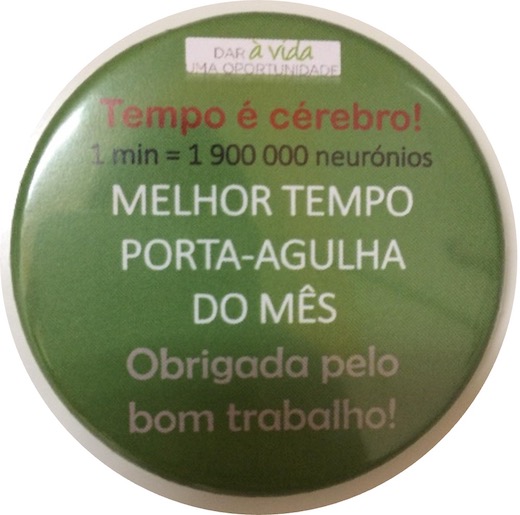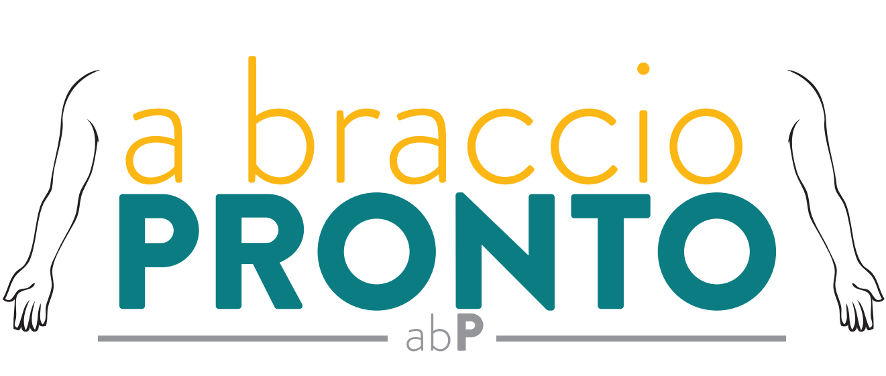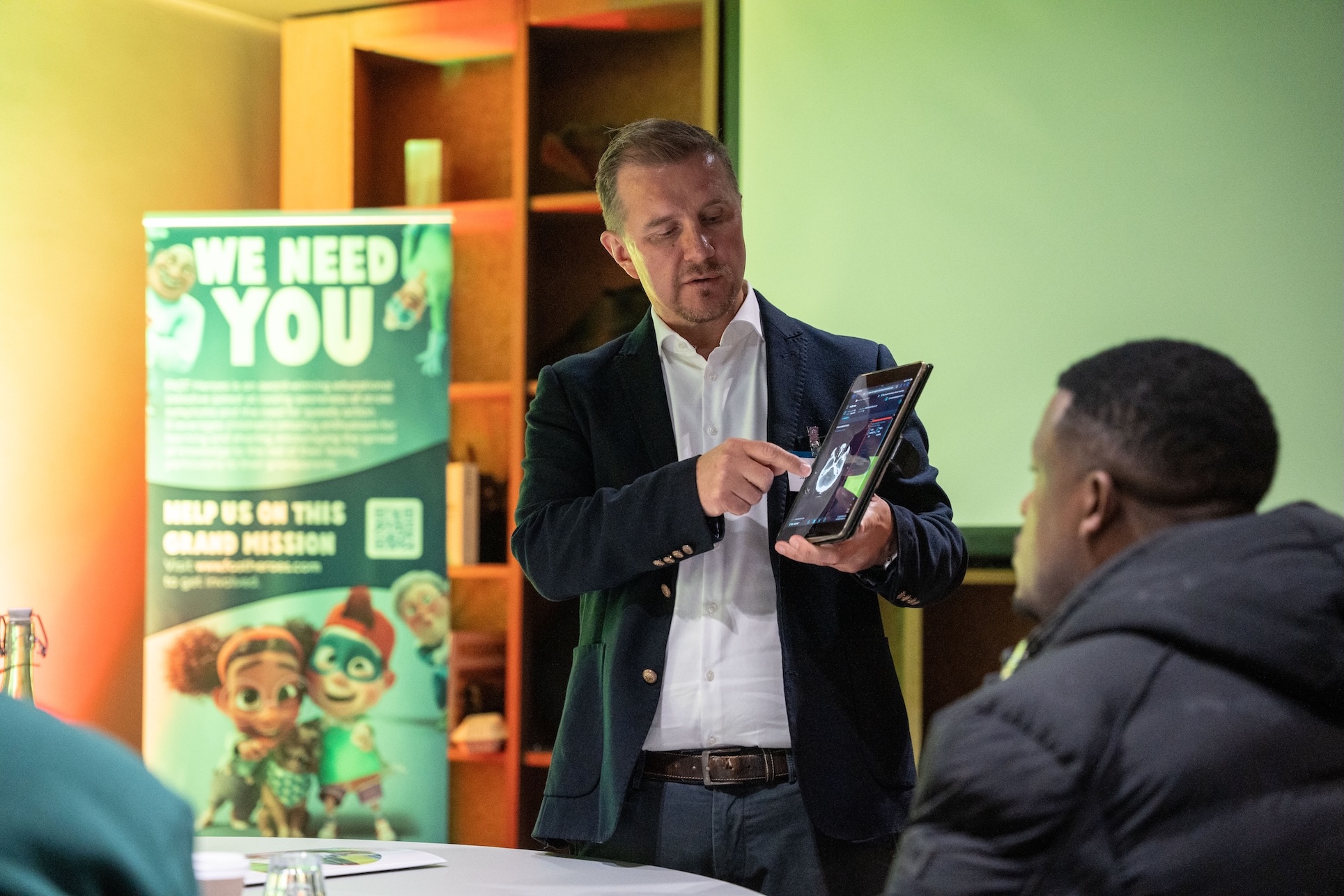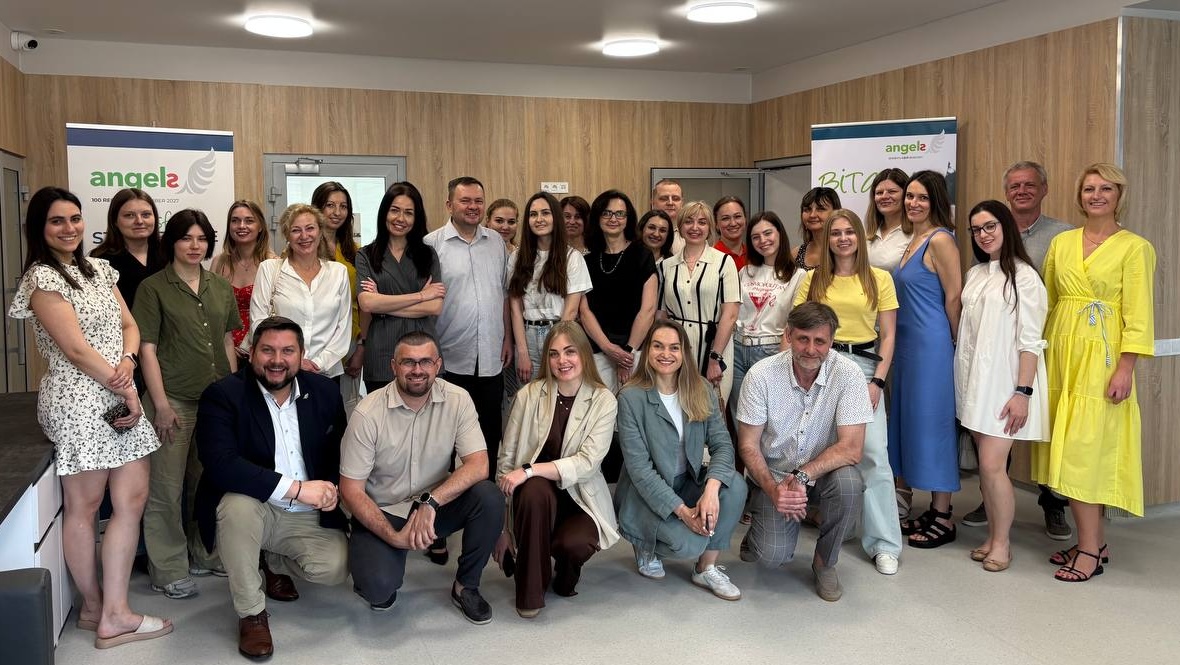
Uma seta que visa a recuperação
Uma natação matinal desencadeou uma ideia brilhante para o pessoal da unidade de AVC no Hospital Universitário Regional de Málaga. Uma seta vermelha indicando a localização do troço desencadeou uma série de pensamentos que levaram ao Arrow Project, uma intervenção para remover a variabilidade na fase pós-aguda do AVC.
O facto é que nem todos os doentes de AVC têm acesso a unidades de AVC especializadas onde os protocolos pós-agudos são estritamente implementados e supervisionados. Muitos doentes de AVC são tratados em enfermarias em hospitais de fala onde os protocolos não estão enraizados na rotina, uma situação que é exacerbada pela rotação das equipas de enfermagem.
O Proyecto Flecha utiliza setas colocadas na parte superior da cama de cada doente para ajudar os médicos, enfermeiros, assistentes de enfermagem e até mesmo porteiros a identificar facilmente o tipo de AVC e o lado afetado, e através de um código QR a aceder aos detalhes dos protocolos de tratamento para cada dia, tais como verificações regulares para disfagia, glicemia e febre.

A primeira sugestão visual é a cor da seta – vermelho para AVC hemorrágico, amarelo para AVC isquémico e verde para hemorragia subaracnoideia. A segunda pista é a direção da seta que indica o lado afetado, por isso mesmo os membros da equipa que acabaram de vir ao serviço saberão instantaneamente em que lado colocar a braçadeira de pressão arterial e a linha intravenosa, onde fixar o oxímetro de pulso para medir os níveis de oxigénio no sangue, como abordar a mobilização do doente e que lado é ideal para doentes cujas capacidades de comunicação estão comprometidas.
Parece muito para esperar de uma forma simples com uma cunha numa extremidade e um triângulo na outra, mas a seta Proyecta Flecha mostrou-se uma arma poderosa nos cuidados pós-agudos e mais do que igual à sua tarefa.
Fora das piscinas públicas, a cultura popular investiu a seta com significado simbólico que inclui atingir os objetivos e alcançar os objetivos. Também representa proteção contra danos, algo que Proyecta Flecha fornece aos doentes de AVC todos os dias.
***
Um telefone de AVC que funciona
É apenas um telefone, como você e eu transportamos. Mas quando é usado para salvar uma vida, torna-se um telefone de AVC.
Esta foi a experiência da equipa de AVC no Hospital Clínico Sumy Central City na Ucrânia durante uma simulação para melhorar a comunicação entre o departamento de neurologia e o serviço de ambulância e aproximar o hospital do seu objetivo de fornecer o melhor tratamento de AVC na região.
São necessários apenas alguns passos simples para otimizar o percurso do doente e garantir que tudo está implementado para uma tomada de decisões rápida, para que o tratamento possa começar sem demora. Um neurologista encontra o doente à porta, existe um caminho claro para a sala de TC e todas as informações relevantes são recolhidas enquanto a TC está a ser realizada. Mas o que coloca esta cadeia de eventos em movimento é uma chamada muito importante para um telefone muito importante.
Um telefone de AVC que liga o EMS diretamente ao departamento de neurologia é a forma mais rápida de pré-notificação, alertando a equipa de AVC de que um doente de AVC está a caminho. A Sumy Central foi um dos poucos hospitais que concordaram com esta intervenção - mas entre ter um telefone de AVC e usá-lo, havia uma lacuna de implementação.
É importante verificar os trabalhos telefónicos, diz a consultora Angels Maria Sheverdina que realizou a simulação em Sumy no nordeste da Ucrânia. E com isto, não significa apenas verificar se o dispositivo está carregado e se a ligação está estável.
“Um telefone de AVC não é apenas um dispositivo, é um processo”, explica Maria. E tornar o processo operacional foi o principal foco da simulação.
As equipas do EMS e do Sumy Central tinham trazido o seu jogo A e o exercício prosseguiu sem problemas até ao momento em que o médico do EMS fez uma chamada diretamente para o neurologista de AVC e houve uma rápida troca de informações sobre o caso. Em seguida, o caminho subiu uma engrenagem.
No debate que seguiu a simulação, foram propostas e discutidas várias oportunidades de melhoria, mas o telefone de AVC tinha ganho o seu lugar na via Sumy Central e seria apenas uma questão de tempo antes de o hospital ganhar o seu primeiro prémio de diamante Angels ESO.
Com um compromisso de ambos os lados para manter o telefone em funcionamento – tanto o processo como o dispositivo – o telefone de AVC Sumy Central tornou-se o primeiro elo numa cadeia que salva vidas. Para mais do que um doente futuro, será a chamada mais importante alguma vez feita.
***

Um distintivo para os melhores
Se visitar a Unidade Vascular Cerebral (CVU) do Hospital de São José, em Lisboa Central, poderá notar nas lapelas de alguns dos seus funcionários um pequeno crachá verde com muito peso.
No topo do distintivo está a frase “dar uma oportunidade à vida”, que é o lema e a missão da Iniciativa Angels. Abaixo, estão as palavras “tempo é cérebro”, juntamente com um lembrete de que o atraso de um minuto custa ao doente com AVC agudo 1.900.000 neurónios. Em seguida, venham as palavras que lhe dizem algo importante sobre o utilizador do crachá: “Responsável da melhor altura do mês para a agulha”.
Ricardo Braga, enfermeiro de AVC na unidade desde 2006, usa frequentemente este distintivo com orgulho. Explica como funciona: “Os crachás foram criados para reconhecer a equipa com o melhor tempo porta-a-agulha todos os meses. Os tempos de tratamento para todos os doentes submetidos a trombólise no nosso hospital são anotados num cartaz que é apresentado no local onde é realizada a reunião multidisciplinar diária. No final de cada mês, os nomes da equipa com os tempos mais curtos são extraídos destas informações e anunciados pelo coordenador da unidade. As equipas orgulham-se de usar o crachá e tentar não o perder para os seus colegas no mês seguinte.”
No primeiro momento, os médicos e enfermeiros envolvidos na trombólise apenas receberam distintivos, mas agora também existem distintivos para o neurorradiologista intervencionista e enfermeiro de angiografia com o melhor tempo porta-a-virilha do mês.

O distintivo criou um espírito de competição amigável, diz Ricardo. Estimula a manutenção de registos e a análise dos tempos de tratamento e ajudou a manter o foco na importância do tratamento rápido do AVC agudo através de um desafio de desempenho contínuo que, em última análise, beneficia os doentes de quem a unidade cuida. E é disso que se trata, em última análise, o distintivo – “a sensação de que podemos fazer a diferença e que, através dos nossos melhores esforços, uma percentagem significativa de doentes regressa a vidas muito semelhantes às que gostavam antes do evento”.
E é disso que se trata, em última análise, o distintivo – “a sensação de que podemos fazer a diferença e que, através dos nossos melhores esforços, uma percentagem significativa de doentes regressa a vidas muito semelhantes às que gostavam antes do evento”.
***

A chamada para os braços
Uma enfermeira do Avezzano Hospital, na região de Abruzzo, em Itália, chamou a atenção para um problema enganadoramente trivial durante uma visita a um consultor. Quando os doentes chegaram ao hospital totalmente vestidos, o enfermeiro explicou que o tratamento foi adiado em 10 minutos ou mais enquanto o vestuário era retirado da parte superior do corpo do doente para inserir a cânula para terapêutica intravenosa. Pode ser poupado tempo precioso se os doentes fossem entregues na sala de TC com os braços expostos – mas como poderiam recrutar o apoio dos serviços médicos de emergência para eliminar este obstáculo?
A resposta foi três palavras: a braccio pronto (em inglês, o significado é “pronto para o braço”). Os autocolantes com estas palavras foram instalados dentro dos veículos EMS como lembrete para garantir que os doentes de AVC chegaram ao hospital prontos para o tratamento começar sem demora.
Um logótipo simples foi concebido para transmitir a mensagem com a maior clareza e impacto possível, e as palavras “um braccio pronto” rapidamente surgiram para um acesso mais rápido a uma intervenção que altera a vida, uma vez que mais doentes estavam a ser trazidos para o hospital com os braços desprotegidos prontos para tratamento.



